Minecraft RTX: this is what the 'real' Ray Tracing looks like
Minecraft is not a simple video game. We are faced with one of those very rare phenomena that break through the videogame dimension up to concern mass culture. With its ability to put young and old in a position to build, it is a sort of "virtual LEGO" that has gone through various stages of success until it was acquired by Microsoft .
Today it has become a reference point for young people, an ideal platform to create and share the virtual experience. Several times others have tried to imitate Minecraft, but nobody has managed to recreate that charm and that philosophy. That the impact of the Mojang title in society is so important is also clear from the data of the 100 billion views achieved in 2019 regarding the contents of Minecraft on YouTube . Of all the platforms where it is available, Minecraft has sold 176 million copies and, despite being launched 10 years ago, it is one of the most played titles on PC.
Minecraft is also a social commitment: among the many initiatives, do not miss the bookstore to promote freedom of the press in dictatorial regimes promoted by Reporters Without Borders. It consists in the download of a particular map for Minecraft, designed to circumvent the strict control of some dictatorial regimes on freedom of the press and expression.
As for the purposes of Ray Tracing , Minecraft, from a completely different point of view, is very important. It may seem trivial to apply such advanced graphics technology to a game that has made Spartan graphics one of its distinctive features. Analyzing in more detail, we realize that it is not exactly like this: with Minecraft RTX NVIDIA and Mojang Studios have reviewed the properties of Minecraft materials in order to manage the lighting in a different and much more precise way.
In other words, it is a taste of how the games of the future will work, the more detailed ones, and how the materials will be managed when they are equipped with advanced physical properties. While for the other games with RTX support we need to take accurate screenshots and to go into meticulous research of the differences, with Minecraft RTX the presence of Ray Tracing is immediately evident. This depends on whether it is a Path Tracing implementation, the "real" Ray Tracing .
Minecraft RTX includes path traced reflections , lighting, shadows, materials and more with specific properties. This contrasts with what has been seen in other games such as Battlefield V , Metro Exodus , Control and Call of Duty: Modern Warfare which, due to excessive consumption of resources, use a hybrid approach. An artificial intelligence mechanism, in these cases, identifies specific parts of the playing area in order to apply selected effects. In Battlefield V, for example, we had only the reflections in Ray Tracing, while in Metro Exodus only the global illumination, with a relative visual improvement. In Modern Warfare or in Shadow of the Tomb Raider, Ray Tracing is only about shadows.
Minecraft RTX, therefore, boasts a full implementation of Ray Tracing, as had already happened with Quake II RTX . Shadows and rays of light in Minecraft RTX are more precise. Furthermore, thanks to "ray-traced" reflections we can see on the reflective surfaces what is transmitted by the game environment in a faithful way. While before Ray Tracing the reflections were generated in a pre-determined and unchangeable way, now they change dynamically according to what actually happens in the game environment. Thus, Ray Tracing becomes a fundamental component of virtual graphics if you want it to represent reality faithfully and accurately.
The magic of Minecraft in Ray Tracing is due to the new physics-based system of materials. While Minecraft's standard materials are characterized by two properties, color and opacity, Minecraft RTX boasts six possible maps for each texture. In addition to the previous two maps, the Minecraft RTX textures can be metallic, emissive, wrinkled and can have disconnections. The rays of light will therefore reflect on the materials in a different way depending on whether the latter are metallic or not and according to their emissivity and roughness levels. From the rough matte finish of the stone to the smooth and shiny ice, the physically based materials are not only much more detailed but combine with Ray Tracing to offer decidedly spectacular effects. There are no more flat lights, but each light source actually emits rays of light.
To underline the launch of Minecraft RTX, NVIDIA has provided Minecraft content creators with a variety of tools to take advantage of NVIDIA RTX, along with several pre-assembled resource packs that can be used freely. In addition, on the NVIDIA website you will find the guide to be able to create physics-based materials, together with the guide to convert the Minecraft creations made for the Java version (that is, the original version) into Bedrock Windows 10 Edition , which is the basis for Minecraft with RTX.
T
o find the new maps with support for Ray Tracing just enter the Marketplace section of Minecraft and write RTX in the search bar. Maps that take advantage of the hardware capacity of GeForce RTX cards are accompanied by the RTX badge. Among the new maps, the one that best of all makes us understand the yield of the new materials based on physics is Crystal Palace RTX .
Minecraft supports the alternation of day and night, which in Ray Tracing is particularly enhanced. Thanks to RTX technology, global illumination is rendered in a more faithful way, i.e. the position of the shadow is calculated dynamically and the edges of the shadows are more or less blurred according to the position of the object that generates them with respect to the light source. The Imagination Island mapit is the one that best manages to convey these differences: it is an imposing theme park full of rides and different biomes. At night we have "ray traced" global lighting and indirect lighting effects, that is, those cases in which the light diffuses into the environment by reflection on the walls, on the floor, on the ceiling or on the furnishings depending on the direction of the original light beam.
At one point the map is covered with bright lava, which gives off reflections on the surrounding surfaces.
The rails of the rides located on the map have textures with metallic properties, while the red tile floor shows the property of roughness.
Ray Tracing, as we have already said, allows reflective surfaces to reflect their surroundings at the correct angle, dynamically and with much more detail than is possible with the pre-baked cube maps that 3D graphics experts know well, because all the games we know are stuffed with them. If a monster, or any other character, moves, this has a dynamic effect on the reflective surface. In addition, Ray Tracing allows surfaces to reflect even objects that are not visible on the game screen. This not only provides the player with additional information about an area, but promotes identification. The Aquatic Adventure RTX map shows very well what we are talking about.
If you have looked carefully at the contents that we have proposed so far, you will have noticed that the presence of Ray Tracing is not always evident in the same way. Although it is a Path Tracing implementation, therefore agnostic with respect to the part to be rendered in Ray Tracing and that concerns the operating logic behind the rendering, the benefits on the visual level depend strongly on how the map is made. From how their authors managed the lighting sources and from how they used the physically based materials.
The map that absolutely surprises the most is Color Light and Shadow , because it presents very clear test scenarios as you can see in the first comparisons and in the first video of this article. Enabling or disabling Ray Tracing, in this case, translates into two graphically almost completely different games. In one of the example rooms of Color Light and Shadow we find an infinite mirror, a recursive reflection impossible without Ray Tracing .
Obviously all these arguments are worth little, or nothing, if they are not related to performance . We know that historically Ray Tracing, and Path Tracing in particular, have not been possible due to insufficient GPU computing power. By requiring the processing of each single ray of light they can consume processing resources intensely and without an implementation in hardware such as that of modern GPUs it has so far been not possible to insert Ray Tracing or Path Tracing in games . For these reasons, based on our tests with Minecraft RTX, the new DLSS 2.0 anti-aliasing technology is crucial.
In fact, Minecraft RTX also supports NVIDIA's DLSS 2.0 technology that applies anti-aliasing without compromising on quality using the artificial intelligence and hardware part of the GeForce RTX GPU used for it, i.e. the Tensor Cores . DLSS 2.0 uses a deep learning neural network called NGX, the Neural Graphics Framework, which is trained offline with a supercomputer to which tens of thousands of high resolution images are administered.
The supercomputer renders them at very low frames using 64 samples per pixel, so as to promote quality without worrying about performance. After the network is trained, NGX provides the results of its calculations to PCs via NVIDIA driver update or other types of OTA updates. The Tensor Cores of the Turing architecture, therefore, thanks to the calculation capacity of up to 110 teraflops for artificial intelligence with which they are equipped, identify if in the game there are images similar to those already processed offline and propose the available results in real time.
DLSS is closely related to Ray Tracing and can be enabled only after enabling the latter. In Minecraft RTX it corresponds to the "Upscaling" option . Minecraft does not allow the user to select the output resolution of the images and automatically uses the resolution at which the Windows desktop is set. You need to change the resolution of Windows, therefore, to change the resolution to which Minecraft renders the images. Therefore, if it detects 1080p DLSS it automatically sets to "Quality" mode ; at 1440p it switches to "Balanced" and to 4K to "Performance" . These are the various presets to which DLSS is available,
In Minecraft we have not noticed a decrease in quality with DLSS enabled, while we reserve the right to publish further tests on the settings of DLSS 2.0 in the coming days after trying them with MechWarrior 5 Mercenaries . As can be seen in the following comparison, there is a slightly unusual application of the anti-aliasing filter, with slightly more blackened edges. However, note that the image is 100% enlarged and that there is no difference in quality in the game.
As for performance, therefore, DLSS 2.0 is essential to be able to play in Ray Tracing. Suffice it to say that at 4K resolution even the very powerful GeForce RTX 2080 Ti was unable to complete the test with DLSS disabled. The smooth 2060 also failed in 1080p. In these cases Windows showed a blue screen and restarted the PC (we report the tests not completed with a "0" in the graphs). We invite, however, to consider these data with many precautions because, as repeatedly stated, Minecraft RTX is available only in Beta version, therefore still highly susceptible to improvements and optimizations, starting from the frame rate in Ray Tracing .

We have roughly a halving of the performance with Ray Tracing enabled, a reduction of frames greater than those found with other games (they were around 30/40% but it was not Path Tracing, as we have seen). Without DLSS the loss of performance can even reach the order of 70%, which is why we have defined it fundamental in the case of Minecraft RTX.
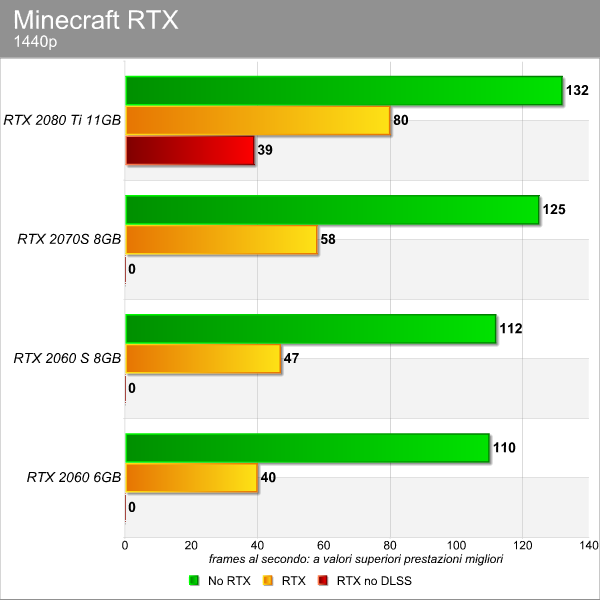
Note that Minecraft does not have an integrated benchmark and therefore we proceeded to carry out the measurements with an external tool by repeating the same gameplay sequence of about a minute on the Imagination Island map for all the video cards tested and at the various resolutions. The test platform used is the same used for the tests of Resident Evil 3 or, as follows: MSI Z370 Tomahawk, Intel Core i7-9700K processor, 16 GB of DDR4-3600 memory and a 250 GB Samsung 860 EVO SSD .
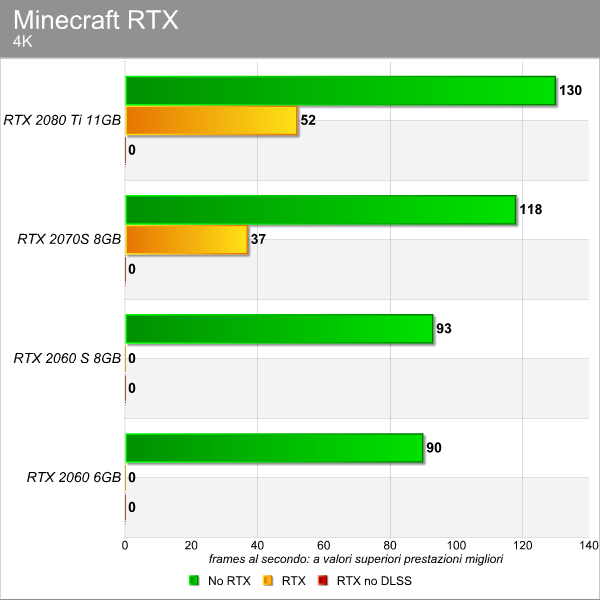
At 4K resolution, Ray Tracing cannot be enabled on the 2060 even with the DLSS setting active. We emphasize, again, that we used the setting of "chunks"default for all tests. With this option, Minecraft identifies the level of visual depth, i.e. how far from the observation point it must continue to render the objects. If in the case of non-RTX versions there is a maximum of 128 "chunks", for Ray Tracing we have 24 "chunks" and by default the value of 8 "chunks" is enabled. Pushing this value to the maximum, you have a polygonal depth comparable to that of the non-Ray Tracing version at 128 "chunks". Here are the quality differences between 8 and 24 "chunks": as regards performance, with GeForce RTX 2080 Ti we recorded 52 fps at 8 "chunks" and 45 fps at 24 "chunks" at 4K resolution and with DLSS enabled.
Ultimately, this first implementation of Ray Tracing in Minecraft depends a lot on the map and how it was made, with more appreciable improvements depending on the effort made by the creator in exploiting the development resources made available by NVIDIA. The performance improvement allowed by DLSS is very interesting, without loss of quality. Minecraft RTX is certainly a test case: some players will find the new graphics aspects appreciable right from the start, but NVIDIA serves above all to show how the graphics of the games of the future will be, and how they will work.
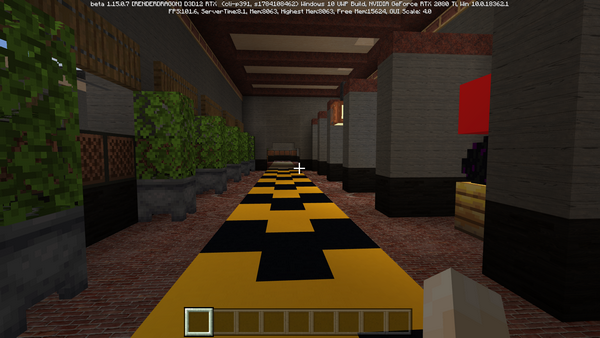
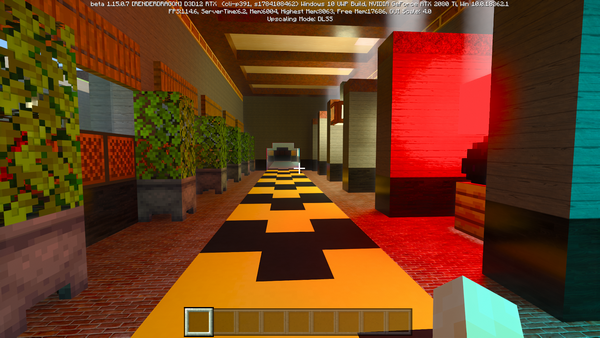

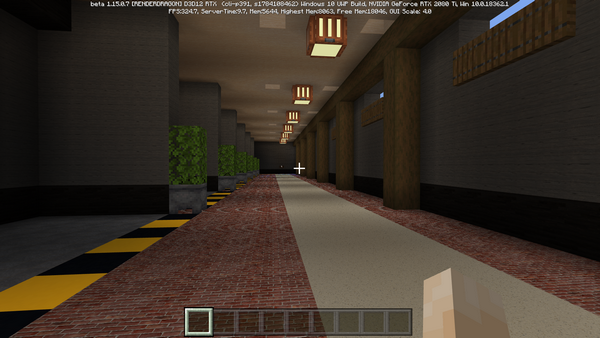
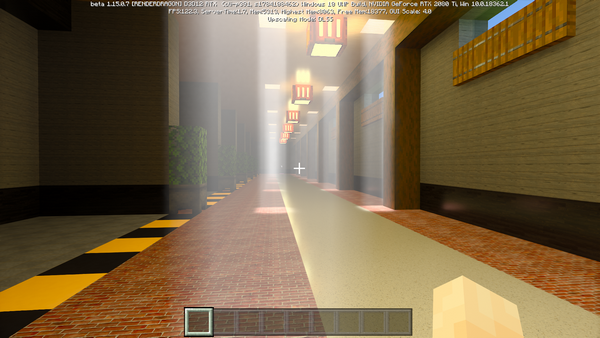
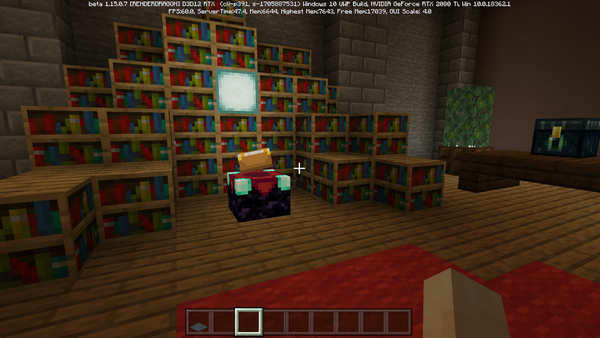
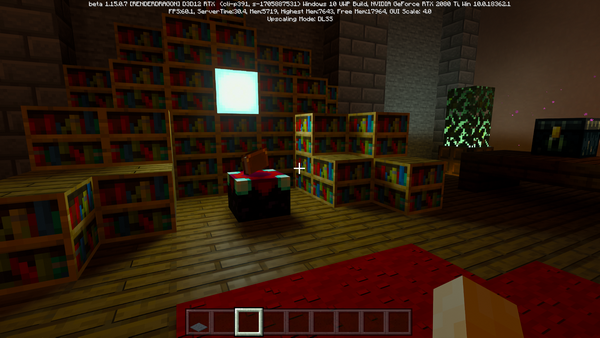
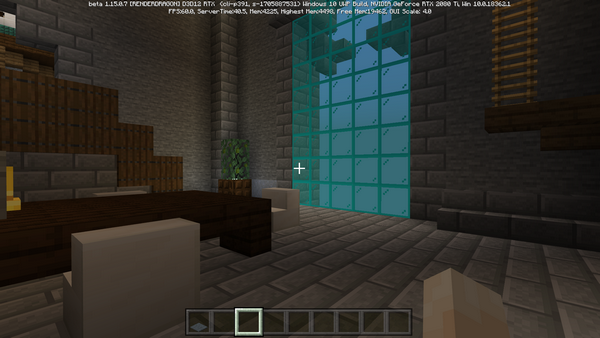
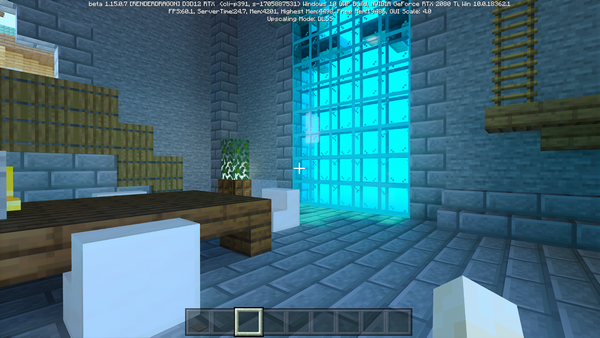
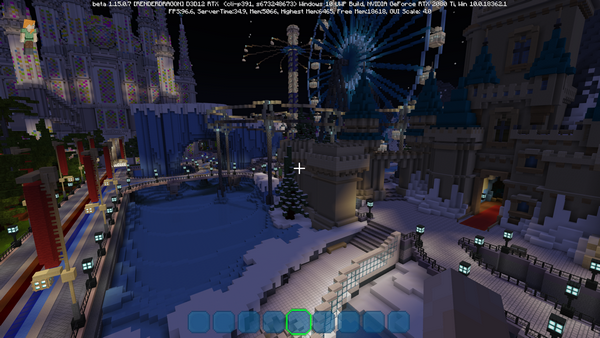
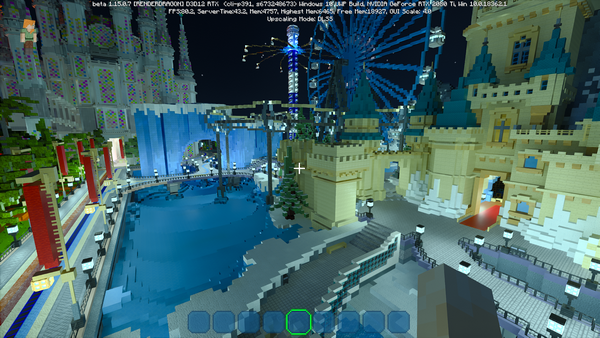
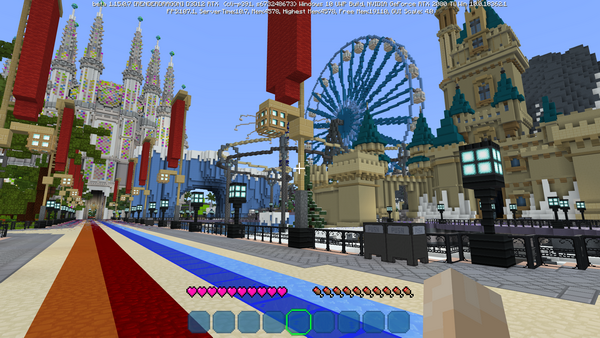


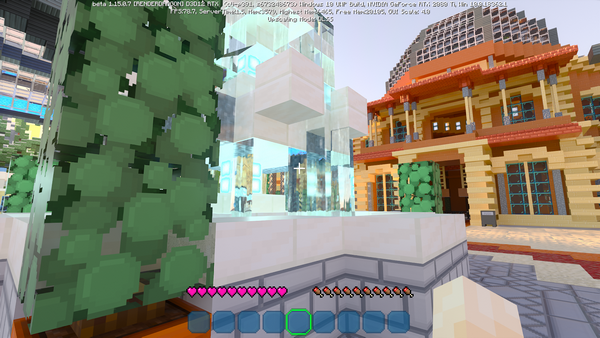





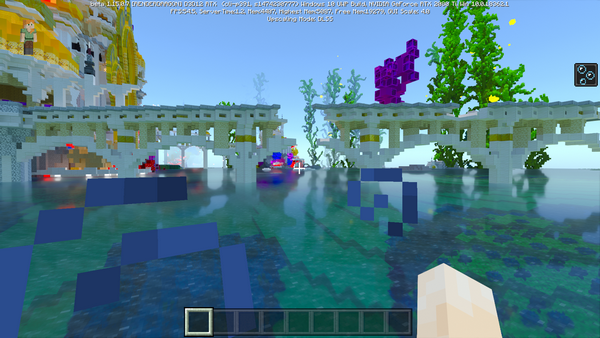
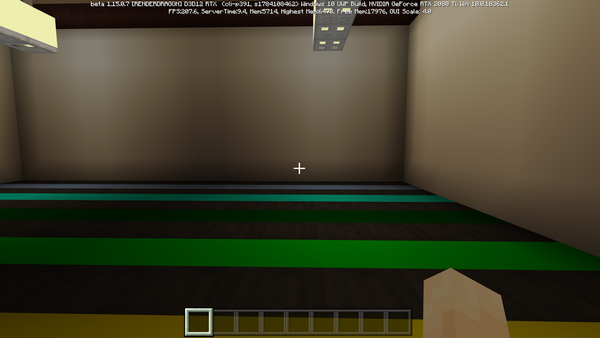

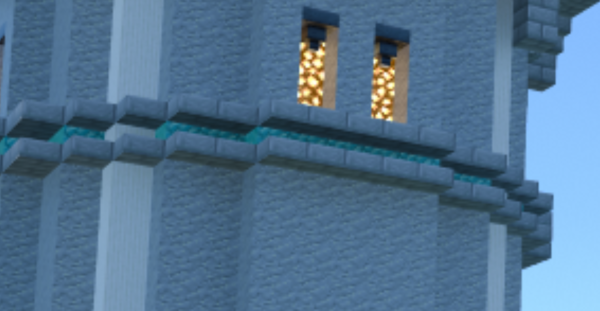

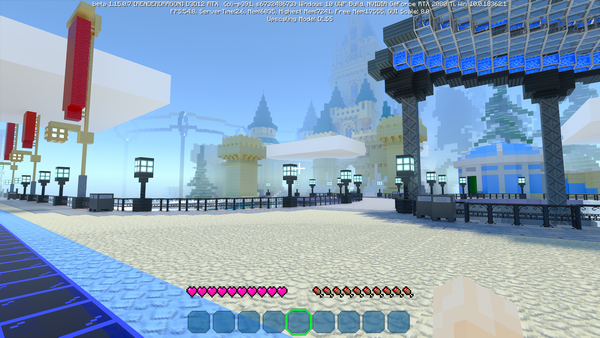

Comments
Post a Comment